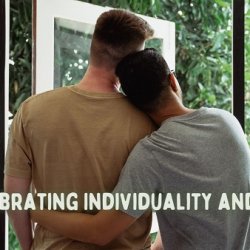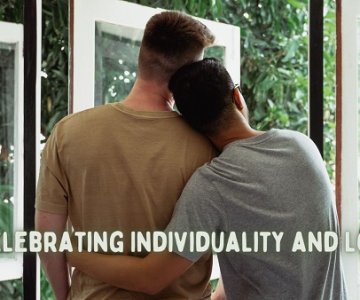Validity, Resources, Misconceptions and Truth behind Gay Test

In recent years, the concept of the “homosexual test” has emerged, suggesting the possibility of using a test to confirm or disprove a person’s sexual orientation. However, it is important to approach this issue with caution and to be aware of the complexities involved in understanding and affirming one’s sexual orientation.
This article reviews the idea of using a gay test to confirm or invalidate sexual orientation and examines its limitations and implications. In addition, we are investigating the availability of resources for people questioning the results of such tests and providing support and guidance at what may be a confusing and challenging time.
In addition, we address common misunderstandings about gay testing with the aim of providing clarity and clearing up any misunderstandings. It is important to separate fact from fiction and approach discussions of sexual orientation with accurate information and sensitivity.
Finally, we consider the question of whether a gay test can be performed multiple times to get different results. We explore the complexities of sexual orientation and its fluid nature, emphasizing that self-discovery and understanding can evolve over time.
In this article, we emphasize the importance of respecting individual experiences and acknowledging that sexual orientation is a deeply personal aspect of identity that cannot be definitively determined or invalidated by a single test.
Join us on this journey as we unearth the truth behind gay testing, explore the resources available, address misconceptions, and understand the complexities of sexual orientation.

The Limitations of Validating Sexual Orientation with ‘Gay Tests’
A “gay test” or any similar test cannot be used to validate or invalidate someone’s sexual orientation. Sexual orientation is a deeply personal and individual aspect of human identity that goes beyond the scope of a test.
Sexual orientation encompasses an individual’s emotional, romantic, and sexual attractions towards others.
It is a complex and multifaceted part of who we are and can evolve or change over time for some individuals. It is not determined or defined by a single test or measurement.
The concept of a “gay test” often arises from stereotypes, misinformation, or biased assumptions about sexual orientation.
It is important to approach discussions of sexual orientation with respect, understanding, and sensitivity, recognizing the diverse range of experiences within the LGBTQ+ community.
Validation of one’s sexual orientation comes from self-awareness, self-acceptance, and understanding. It is a personal journey of exploration and self-discovery that can be supported through education, resources, and a supportive community.
It is crucial to create an inclusive environment where individuals feel safe and supported in their identities, rather than relying on a test to determine or validate their sexual orientation.
Support for Those Questioning ‘Gay Test’ Outcomes
There are resources available for individuals who question the results of a “gay test” or have concerns about their sexual orientation.
It is important to note that these resources primarily focus on providing support, guidance, and accurate information rather than endorsing the validity of such tests. Here are some common resources that can be helpful:
- LGBTQ+ Support Organizations: Various organizations provide support, information, and resources for individuals questioning their sexual orientation. Examples include The Trevor Project, GLAAD, and PFLAG. These organizations offer helplines, online chat services, and community support networks.
- Mental Health Professionals: Seeking guidance from mental health professionals, such as psychologists, therapists, or counselors with expertise in LGBTQ+ issues, can be beneficial. They can provide a safe space to discuss concerns, explore personal experiences, and provide support during the journey of self-discovery.
- LGBTQ+ Community Centers: Local LGBTQ+ community centers often offer resources, workshops, support groups, and counseling services. They can provide a sense of community, understanding, and connection with others who have gone through similar experiences.
- Online Forums and Support Groups: Online platforms and forums dedicated to LGBTQ+ topics can provide spaces for individuals to connect with others, share experiences, and seek advice. It is important to find reliable and moderated platforms to ensure a safe and supportive environment.
- Educational Websites and Publications: There are numerous educational websites, articles, and publications that provide accurate information about sexual orientation, debunk myths, and offer guidance. Examples include the American Psychological Association (APA) and reputable LGBTQ+-focused websites.
Remember, the journey of self-discovery is unique for each individual, and seeking support and understanding from reliable resources can be valuable.
It is essential to prioritize self-acceptance, respect, and personal growth in navigating questions about one’s sexual orientation.
Debunking Misconceptions about Gay Tests
It is important to approach the concept of gay tests with critical thinking, skepticism, and an understanding of the limitations associated with such tests.
Recognizing and dispelling these misconceptions helps promote a more informed and respectful understanding of sexual orientation.
Here are some common misconceptions about gay testing:
Misconception: Gay tests are scientifically validated methods.
Explanation: One of the common misconceptions is that gay tests have a scientific basis and can accurately determine someone’s sexual orientation. In reality, there are no scientifically validated tests that can reliably assess or measure sexual orientation.
Misconception: Gay tests provide definite and conclusive results.
Explanation: Another misconception is that gay tests can provide definitive and conclusive results about an individual’s sexual orientation. However, sexual orientation is a complex and deeply personal aspect of identity that cannot be reduced to a simple test or measurement.
Misconception: Gay tests are objective and unbiased.
Explanation: It is often assumed that gay tests are objective and unbiased. However, these tests can be influenced by stereotypes, societal biases, and limited understanding of the diverse nature of sexual orientation. Consequently, they may not accurately capture the complexities of an individual’s experience.
Misconception: Gay tests determine someone’s future sexual orientation.
Explanation: Some individuals may believe that gay tests can predict or determine someone’s future sexual orientation. However, sexual orientation can evolve and change over time, and it is not possible to predict someone’s future orientation accurately through a test.
Misconception: Gay tests are universally applicable to all individuals.
Explanation: There is a misconception that gay tests can be applied universally to individuals of all backgrounds and experiences. However, sexual orientation is deeply personal and can be influenced by various cultural, social, and individual factors. One test cannot capture the diversity of experiences within different sexual orientations.
Can a gay test be taken multiple times for different results?
No, taking a gay test multiple times does not guarantee different or more accurate results. The concept of a “gay test” itself is not based on scientifically recognized methods for determining or measuring sexual orientation reliably.
Sexual orientation is a complex and deeply personal aspect of human identity that cannot be definitively determined by a single test or measurement.
Furthermore, the idea of taking a gay test multiple times implies that sexual orientation is something that can change or fluctuate over time.
While it is true that some individuals may experience shifts or changes in their understanding or exploration of their sexual orientation, these changes are subjective and personal. They may not necessarily be reflected in the results of a test.
It is essential to approach discussions of sexual orientation with sensitivity and understanding, recognizing that it is a diverse and fluid aspect of human identity.
Rather than relying on tests, individuals are encouraged to engage in self-reflection, explore their feelings and attractions, and seek support from trusted sources such as LGBTQ+ organizations or mental health professionals to better understand and embrace their sexual orientation.


Hej, dette er en kommentar.
For at komme i gang med at moderere, redigere og slette kommentarer, skal du gå til kommentarskærmbilledet i kontrolpanelet.
Kommentaravatarer kommer fra Gravatar.